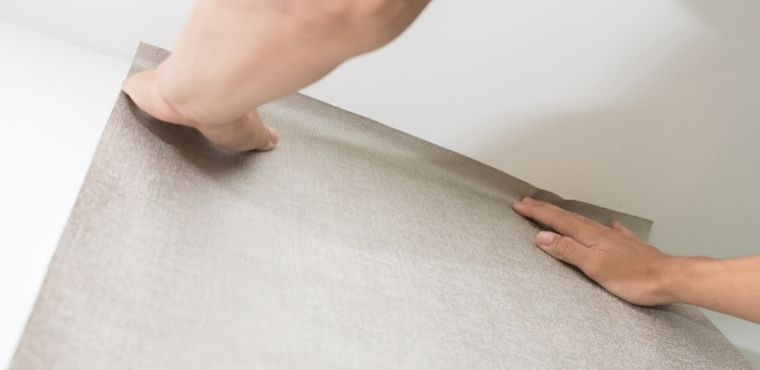So you’re planning to DIY a wallpaper job. Wallpaper is a fantastic way to decorate the walls of your abode, but DIY installation can be tricky. You know what they say: prevention is worth a pound of cure. To help you avoid making DIY wallpapering blunders, here are four common mistakes made when installing wallpaper and what to do instead.
Not Measuring Correctly
There are a lot of things you can reliably guesstimate, but wallpaper isn’t one of them. To ensure you have enough material for your walls, you’ll need to measure carefully. If you measure twice, you’ll only need to order once!
Now, if your room is a traditional square or rectangular shape with a flat ceiling, measuring is easy; just grab the full width and height of the wall. If you have an irregularly shaped room, measuring gets a tad trickier. Fortunately, there are plenty of measuring guides to help you measure even the most oddly shaped rooms accurately.
Didn’t Order Enough Wallpaper
It’s important to always buy more than you think you need. Why? Because it gives you the flexibility to slip up here and there without compromising the entire project. And for a DIYer, this flexibility is invaluable!
We recommend purchasing 10–15 percent over your original estimate need just to be safe. If you end the installation with leftover wallpaper, there are some fun ways to use it. You can use it for crafts or cut it up to decorate smaller areas of your home, like the stair treads or the inside of a drawer.
Zero Prep
Yes, there’s prep work you should do prior to installation. Do most people do it? No, but not doing it poses a huge risk to the longevity of your wallpaper! Before you install your wallpaper, take the time to clean your walls.
No special cleaners are required. Just take a soft microfiber cloth, dip it in warm, soapy water, wring it out until it’s only slightly damp, and wipe the walls to remove dirt, dust, and other contaminants. Wait for the wall to dry—this can take anywhere from 24 to 48 hours—before proceeding with the installation. If you install wallpaper on a dirty wall, it may not adhere correctly. This can cause it to peel, bubble, or fall off!
No Smoothing
After installing your wallpaper, you need to smooth out any bubbles or creases with a flat edge. If you don’t do this, your walls will look disheveled. The flat edge you use can be anything from a credit card to a putty knife. Start in the middle and slowly guide the bubbles to the edges where they can escape. Repeat until your wallpaper is perfectly smooth.
Above are four of the most common mistakes made when installing wallpaper. Now that you know what they are, you can diligently avoid them to ensure a successful install.






